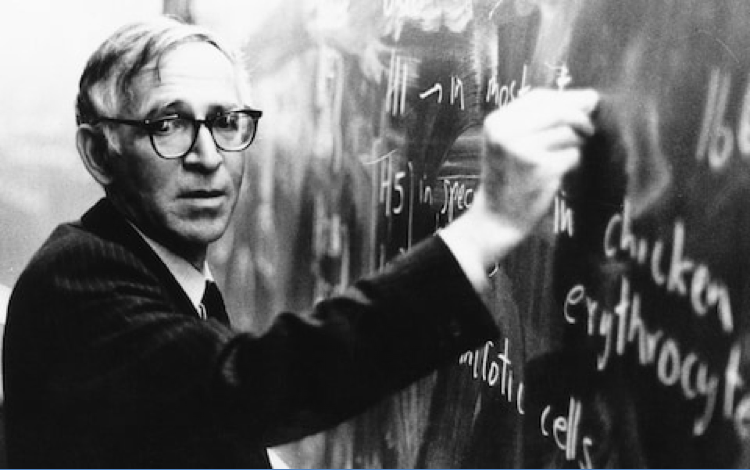News
Aaron Klug 1926 – 2018
Posted by: Joachim Frank |
November 30, 2018 |
No comment

Obituary in the Telegraph:
Obituary in the Washington Post:
These Obituaries give an idea of the life time achievements and unique intellectual presence of Aaron Klug. I met him a few times, but these encounters were cold, and distant, perhaps partly because of my own feeling of being dwarfed and outrun by his sharp insights and quips.
Just a year after I started working with Walter Hoppe, in 1967, Aaron Klug published a milestone paper with his postdoc David DeRosier in Nature, on the three-dimensional reconstruction of the T4 bacteriophage tail. It was the first time the digital computer was used to reconstruct a three-dimensional object from its two-dimensional projections, following a fundamental theorem formulated by John Radon in 1917. Even though the geometry of the object – a helical arrangement of subunits with identical structure – lent itself to a very specialized approach, the DeRosier and Klug paper in 1968 is still recognized for ushering in a new era in electron microscopy: it combined quantification of information in electron micrographs, digital image processing, and 3D reconstruction of biological molecules.
Because of the importance of 3D reconstruction in many studies to follow, I always thought David DeRosier deserved to be recognized along with Klug in the 1982 Nobel Prize in Chemistry. This is particularly visible now since Klug’s other contributions stated in the Nobel citation have lost some of their luster. The citation reads: “for his development of crystallographic electron microscopy and his structural elucidation of biologically important nucleic acid-protein complexes.” Not that the 1982 Chemistry Prize was particularly crowded: it was bestowed on Klug alone.



